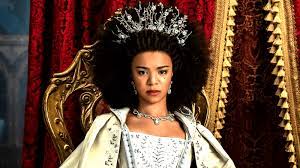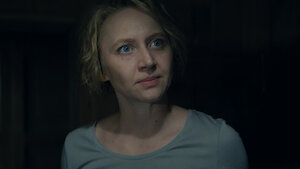Despite Stanley Kubrick’s frantic perfectionism, the shooting of A Clockwork Orange took only six months. The film was finished by April 1971 and was the fastest of his career. Upon its release, the film drew varying reactions from American and British audiences. Some admired its genius, others accused it of advocating violence. Kubrick’s family received numerous threats and had to endure protest rallies in front of their home.
The British media wrote about the film’s negative influence on young people and considered him guilty of looting and murder in the streets. In 1973 the film was withdrawn from British distribution and banned from release until 2000, a year after the death of its creator.
Nevertheless, all this did not prevent the film, like the entertainment giant National Casino, from becoming something iconic and be loved by many generations. Today, let’s remember why we love it so much!
A Few Words About the Plot
In 1962, British writer Anthony Burgess predicted an immoral future when he published A Clockwork Orange. The first-person story was saturated with slang words from the fictional language “Nadsat.” Its author was the main character, fifteen-year-old sociopath Alex – played in the film by the magnificent Malcolm McDowell. The young man is in love with classical music, especially the works of “his old friend” Ludwig van.
Alex and his accomplices engage in fights, robberies, and rapes until the hero is imprisoned at Wandsworth Prison for sadistic murder. Learning of the possibility of a reduced sentence, Alex voluntarily agrees to an experiment on himself, the successful execution of which will bring him home.
The therapy “by the method of Ludovic” developed a conditioned reflex to violence in the subjects – the thought of the crime Alex was seized by a terrible headache and nausea. The effect was intensified by Beethoven’s “ninth symphony,” to which the hero was forced to watch violent scenes from movies – because of this he developed a similar reaction to his favorite classical music.
History of the Title
“A Clockwork Orange” was Anthony Burgess’ attempt to deal with personal tragedy. During World War II, while the writer was overseas, his pregnant wife was brutally beaten in London by four American army deserters, causing the couple to lose their unborn child. The woman then attempted suicide and later became addicted to alcohol and died.
The writer’s observations of various street gangs and their fetishistic dress code served as an additional source of inspiration. The novel’s language was also influenced by his acquaintance with St. Petersburg stylists and farmer’s men – Burgess decided that the vocabulary of the gang leader and his friends would consist of a mixture of Russian and English words, slang, and gypsy.
Another reason for the novel’s unusual title is the writer’s affinity for the phrase “crooked as a clockwork orange. It is used by Cockney speakers of the older generation when talking about unusual or strange things. By the author’s own admission, he realized that this phrase was most appropriate for a story about the use of inhumane methods on people. In addition, Anthony lived for several years in Malaysia, where the word orang is translated as “human.”
Making the Film
Two years have passed since A Clockwork Orange went to press. In 1964, director Stanley Kubrick released a brilliant military-political satire, “Dr. Strangelove, or How I Learned Not to Worry and Loved the Atomic Bomb”. The film was ironic, pessimistic, and astonishing in its technically precise execution.
In 1966, one of the screenwriters of Dr. Strangelove, Terry Southern, sent Burgess’ novel to the director, which he ignored, particularly because of the difficulty of the language. Southern, however, was so enthusiastic about the cinematic incarnation of the story that he bought the rights to the work. He then wrote an adaptation, which he sent out to several producers, including David Puttnam. Southern sent a copy of the script to the censor as well, but his letter was returned unopened. The reply read: “I am familiar with the book, and there is no point in reading this script because the story is about the disobedience of young people to the state, and that is unacceptable.”
In fact, Burgess’s book was read by Kubrick’s wife Christina and persuaded her husband to think about its adaptation. At the end of 1969, the director still responded to the proposal Southern. The first draft of the film, he completed May 15, 1970 – it was the first time Kubrick worked on the script alone.
Filming Locations
Virtually all of A Clockwork Orange was shot on location for two million dollars in the winter of ’70 to ’71. Kubrick’s house, which was outside London, had an editing room, a movie room, and a garage, which he used as an office.
“I want to work on the film where I can get to from home in an hour and a half, so find out how far I can get in that time during rush hour,” Bernie Williams, the director’s assistant producer, said of the director’s words in an interview.
Kubrick wanted to create the world of the near future using the modern architecture of England. In the scene where Alex walks with his cronies before pushing them into the water, the viewer sees Thamesmead. This area of London is known for its concrete terraces, apartment buildings, and elevated walkways built around water features.
“Alex’s Apartment” Kubrick found in Elstree and completely redesigned it to fit the image of the main character. The writer Alexander’s house, where Alex recalls a song from “Singin’ in the Rain” and rapes the owner’s wife, was filmed in two different locations: the outside was a house in Oxfordshire, the inside a house in Radlett.
The only specially built interiors for the film were the Korova bar, the reception area in the prison, the bathroom, and the lobby in the writer’s house.
Visual Composition
Kubrick’s adaptation of the novel is divided into three parts. In the first, Alex and his gang terrorize the locals. Then the hero is imprisoned and subjected to an experiment. Finally, after his release, Alex himself is abused by his victims and eventually “awakens” – because you can’t change your destiny.
Each of the three sections has a different color palette and camera work. To portray Alex’s predilection for “ultra-violence,” Kubrick and cameraman John Olcott used a vivid color palette. Malcolm McDowell’s character’s odyssey begins at the Korova bar. According to John Baxter, who wrote the Kubrick biography, the director envisioned the establishment as “a temple to the sexual stimulation of the consumer.” The bar’s blurring black interior contrasted sharply with sculptures of nude women declaring moral depravity and writing on the walls. The director was inspired by the exhibition of Allen Jones, one of Pop Art’s brightest representatives, which featured life-size furniture in the form of fiberglass female figures.
By the way, pop art served the picture well – built on paradoxical combinations, it best reflects the attitude of the characters to the world. Alex’s parents’ apartment is fully sustained in this aesthetic – bright colors, shiny surfaces and non-standard geometry scream of vulgarity. In the hero’s room instead of curtains hangs a portrait of Beethoven, shutting him off from real life.
The writer and his wife’s house is a counterbalance to the garish interior of Alex’s world: there is a lot of wood, big mirrors, which visually expand the space, and calming paintings. Thus, the violent world of the hero is contrasted with the life of ordinary people.
The time the hero spends in prison and the process of “reprogramming” his brain is presented in cold colors, and the long shots create a gloomy atmosphere. The final part of the film is characterized by moderate brightness.
Kubrick started out as a photographer, so he always paid a lot of attention to angle and composition. Center alignment and complete symmetry represented order, control, discipline, logic, and organization, qualities that Kubrick had as a director. He adhered to these strict principles, but in the case of A Clockwork Orange, he recognized that Alex’s story required more avant-garde methods of shooting.
Kubrick deliberately used a wide-angle lens when showing events from Alex’s point of view. Thanks to this there was a distortion of space, which was consistent with the subjective and painful perception of the world hero. The tape found a place and signature “Kubrick’s view” – a close-up of the face, looking crookedly straight at the camera. With him and begins the film.
“I wanted to find a way to stylize this violence – to make it look like a ballet,” the director admitted. To do that, he played with accelerated and slow motion. The scene where Billy Boy and his gang are about to commit violence against a girl in an abandoned casino resembles a dance. A Gioacchino Rossini composition is played in parallel, and the image of the bacchanalia is deliberately accelerated. In this way, Kubrick mocked those who often resort to these effects unnecessarily.
Music
Kubrick’s film speaks to the inability of culture to have any morally cleansing effect on society. By using Beethoven’s Ninth Symphony as the structural basis for the film and as a sign of the dramatic development of the plot, it is as if he is asserting that music has only the meaning that each individual gives it.
The director turned to electronics to bring futuristic motifs to eighteenth-century compositions. Together with composer Walter Carlos, they created updated versions of the Ninth Symphony, Rossini’s William Tell, and Purcell’s Music for the Death of Queen Mary.
The bar features a synthesized version of the last of these compositions. The establishment’s peculiar interior is interspersed with slang expressions. The drugged milk that the characters drink gives them the energy for the “good old ‘ultraviolence'” that Alex and his “others” love so much. This milk is tainted in the same way that beautiful classics are tainted by performing on a synthesizer.
The figure of “Ludwig van” and his compositions represent the deepest and darkest sides of Alex’s human nature. Listening to the symphonies, the hero experiences a physical pleasure, and in his mind, macabre fantasies unfold – he imagines an atomic explosion, the death penalty by hanging, the death of people under collapsing stones. When an experiment is conducted on him, Beethoven instantly turns from a friend into a weapon against the hero himself.
















